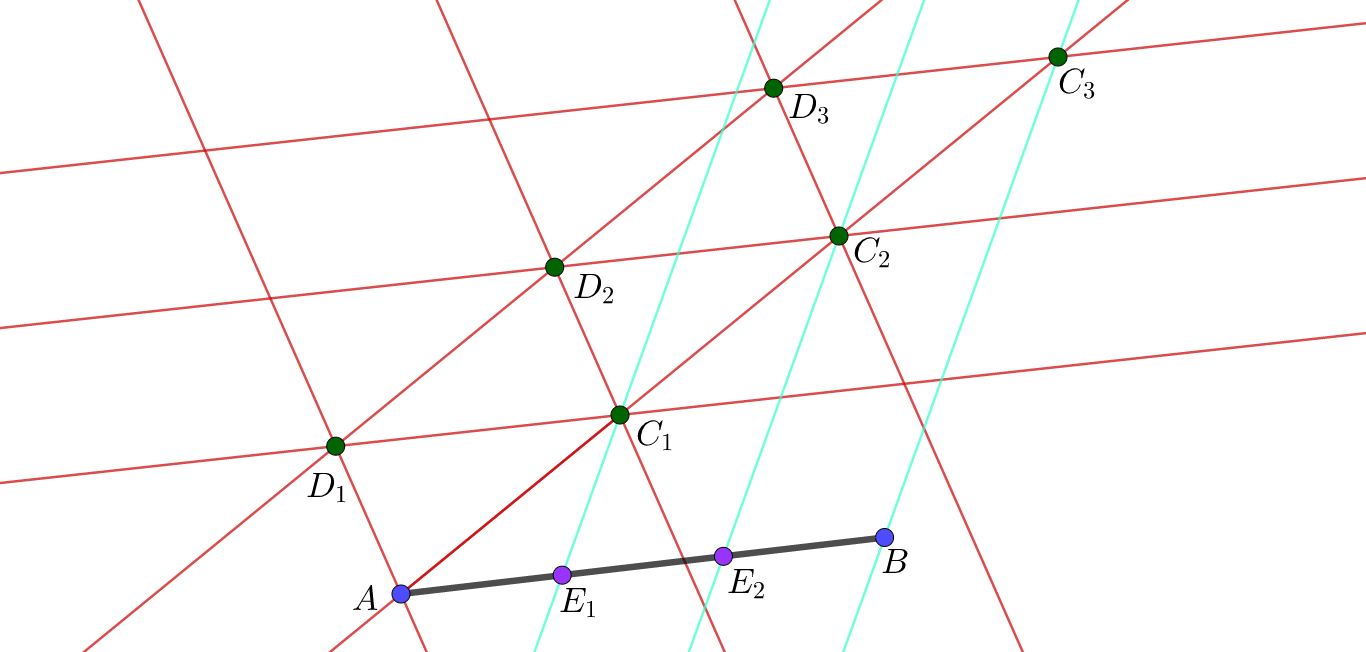Dividing Line Segments in Affine Geometry
Here are the steps to divide a line segment into equal segments using only the tools in affine geometry. Here, we assume the axiom that there is a unique line through a given point that is parallel to a given line, i.e. the two lines do not meet.
Construct the line segment , given points and in affine -space.
Take one of the points on the line segment, say , and draw a line through not parallel to the line .
Pick a point on the line constructed in Step 2.
Draw a line through not parallel to the line or , and pick a point on this line.
Construct a parallel line to the line through the point .
Construct a parallel line to the line through the point , and define the meet (intersection) of this line with the line in Step 4 to be the point .
Draw the line and construct a parallel line to this line through the point .
Define to be the meet of the line constructed in Step 6 with the line .
Repeat Steps 5-7, now with , and instead of , and ; we do this times, so that we get copies of the line segment .
Suppose then that the last point we have is ; we then draw the line .
Through each of the points , for ranging from to , draw the lines through each of the points, parallel to the line drawn in Step 9.
The meets of each of the lines in Step 10 and the line segment will then be denoted by , for ranging from to .
As a result of this construction, we then have that the points , for ranging from to , divide the line segment into equal line segments.

I did a construction (see picture above) where I just divided a simple line segment into equal segments.
EDIT: Picture too small to look at by eye; not sure how to make it bigger. Just click to enlarge, I guess.
EDIT 2: There are a lot more things to say about this, but I am going to write a book with this content in it. Don't want to spoil too much...
Easy Math Editor
This discussion board is a place to discuss our Daily Challenges and the math and science related to those challenges. Explanations are more than just a solution — they should explain the steps and thinking strategies that you used to obtain the solution. Comments should further the discussion of math and science.
When posting on Brilliant:
*italics*or_italics_**bold**or__bold__paragraph 1
paragraph 2
[example link](https://brilliant.org)> This is a quote# I indented these lines # 4 spaces, and now they show # up as a code block. print "hello world"\(...\)or\[...\]to ensure proper formatting.2 \times 32^{34}a_{i-1}\frac{2}{3}\sqrt{2}\sum_{i=1}^3\sin \theta\boxed{123}Comments
There are no comments in this discussion.